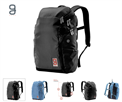
In today’s digital era, data is the cornerstone of decision-making. Whether for businesses, academic research, or personal use, the right analytics tools can make all the difference in uncovering insights and optimizing strategies. Here’s a look at the top 10 tools every analytics enthusiast should know about:
1. Google Analytics
Why Use It:
The go-to tool for website and app analytics, Google Analytics provides detailed insights into user behavior, traffic sources, and campaign performance.
Best For: Website owners and digital marketers.
Key Features:
- Real-time data tracking.
- Audience demographics and interests.
- Integration with Google Ads and Search Console.
2. Tableau
Why Use It:
Tableau turns complex datasets into stunning visualizations, making it easier to interpret trends and patterns.
Best For: Data visualization and business intelligence professionals.
Key Features:
- Drag-and-drop interface for creating dashboards.
- Integration with various data sources.
- Advanced data modeling and predictive analytics.
3. Microsoft Power BI

Why Use It:
Power BI offers robust business intelligence solutions, combining data integration, processing, and visualization.
Best For: Enterprise-level reporting and data exploration.
Key Features:
- Customizable dashboards.
- Real-time analytics capabilities.
- Seamless integration with Microsoft products like Excel.
4. Adobe Analytics
Why Use It:
This premium analytics platform excels in understanding customer journeys across various channels.
Best For: Enterprises focused on customer experience optimization.
Key Features:
- Multi-channel data tracking.
- Predictive analytics for customer behavior.
- Advanced segmentation tools.
5. Looker (by Google)
Why Use It:
Looker provides a modern approach to analytics by simplifying data exploration through a web-based platform.
Best For: Startups and medium-sized businesses.
Key Features:
- Cloud-native platform.
- Flexible data modeling capabilities.
- Integration with other Google Cloud tools.
6. SAS Analytics
Why Use It:
SAS is a pioneer in advanced analytics, offering tools for statistical analysis, data mining, and AI-driven insights.
Best For: Research-intensive industries and data scientists.
Key Features:
- Comprehensive statistical tools.
- AI and machine learning capabilities.
- Support for large-scale data processing.
7. Mixpanel
Why Use It:
Mixpanel specializes in product analytics, helping businesses understand user engagement and improve retention.
Best For: App developers and product managers.
Key Features:
- Cohort analysis.
- Event tracking for user actions.
- Funnels to map user journeys.
8. Hotjar
Why Use It:
Hotjar combines analytics with qualitative insights, such as heatmaps and user recordings, to optimize web experiences.
Best For: UX designers and digital marketers.
Key Features:
- Heatmaps to visualize user activity.
- Session recordings to track behavior.
- Feedback polls and surveys.
9. IBM Cognos Analytics
Why Use It:
Cognos is an enterprise-grade solution for advanced analytics, reporting, and AI-driven insights.
Best For: Large organizations requiring detailed reporting.
Key Features:
- AI-powered insights.
- Robust reporting tools.
- Integration with other IBM platforms.
10. RStudio
Why Use It:
RStudio is a favorite among statisticians and data scientists for its open-source environment for statistical computing and graphics. dive into tools like Expert system shells in artificial intelligence to understand its applications better.
Best For: Academic researchers and statistical analysts.
Key Features:
- Comprehensive statistical modeling tools.
- Support for custom scripts and algorithms.
- Strong community support and extensive libraries.
Choosing the Right Tool
When selecting an analytics tool, consider factors like the complexity of your data, your budget, and your desired outcomes. Each tool offers unique strengths and can cater to specific use cases, from web analytics to enterprise-level business intelligence.
As you explore AI tools like What is the purpose of prompt engineering in AI systems and integrate them into your routine, you’ll discover their immense potential to simplify and enhance your life. Start small, stay curious, and let AI guide you towards a more productive and organized future!
To read more blog visit : b2barticles.com
Leave a Reply
You Might Like Also

How to Conduct Effective Mobile App Usability Testing













